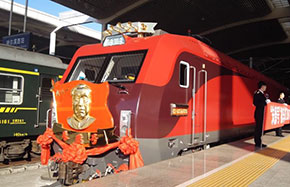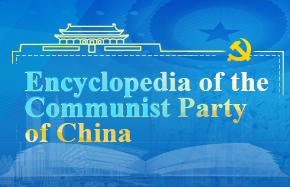Surge in SUV popularity boosts Chinese auto brands
Sales in February remained on track for China's light vehicle market, with a seasonally adjusted annual rate, or SAAR, of 24.6 million units, a level similar to that seen in January, while sales of locally-made models saw a moderate year-on-year rise of 2 percent in the month, albeit distorted by the Chinese New Year holiday, which falls on different days each year.
Ruling out the majority of the impact from the week-long holiday, in year-to-date terms, China's locally-made light vehicle sales rose by 6 percent year-on-year, in line with our previous expectation.
Given that, historically, sales of light commercial vehicles have accelerated in the wake of the Chinese New Year break to reach a yearly peak, we believe that this year's late holiday has had a negative effect on the combined figures for January and February in the sector.
Year-to-date sales of light commercial vehicles amounted to 570,000 units, a decline of 16 percent on the previous year.
The light truck segment continued to lead the decline, with sales falling by 24 percent year-on-year in year-to-date terms. Its future is fraught with risks, particularly where low-end models (with high levels of polluting emissions) are concerned, in light of the rapidly expanding environmental concerns which have attracted increasingly widespread public attention.
This year, the peak selling season, which invariably precedes the New Year holiday, was slightly longer, which favored the passenger vehicle sector somewhat, with sales of locally-made models reaching 3.24 million units in year-to-date terms, marking a double-digit increase of 11 percent year-on-year.
The dynamic trend in the SUV and MPV segments continued unabated, with sales of locally-made models surging by 46 percent and 20 percent year-on-year, respectively. Conversely, the car segment as a whole was seen to plateau.
Chinese brands, in particular, had a strong start to the year, with year-on-year growth in light vehicle sales in year-to-date terms reaching 12 percent, in contrast to the 6 percent year-on-year growth in the overall light vehicle market. Even when allowing for China Association of Automobile Manufacturers' definition of the passenger vehicle segment - which removes the effect of the volume transfer from the Mini Bus segment to the MPV segment - Chinese-branded models' year-to-date share reached 43 percent, pointing to a sizeable improvement from the 38 percent seen in the same period of last year.
Within the thriving SUV segment, year-to-date sales of Chinese-branded models amounted to 460,000 units, double the volume achieved in the same period of last year. It is also worth noting that this volume exceeds that of all locally-made foreign-branded SUVs put together, sales of which increased only modestly to 360,000 units, an 8 percent increase in year-on-year terms.
Among the top 10 bestselling SUVs, seven were Chinese-branded models, led by the stellar performance of the Haval H6, which saw sales of 56,300 year-to-date. The boom in the segment has prompted Chinese Original Equipment Manufacturers, or OEMs, to accelerate the launch of SUV products into the market as evidenced by the introduction of as many as six new models over the last twelve months among the top ten most popular Chinese-branded SUVs.
When taking into account the flat trend seen in the car segment for both Chinese and foreign brands, it becomes evident that the flourishing SUV segment has helped Chinese brands stave off the pressure from the downward extension of foreign-branded cars.
More significantly, on the competitive frontier, Chinese brands have established a solid position in the 100,000 yuan ($16,393)-plus price range with their SUV products, thanks to the gap in the price band left by foreign marques. Looking ahead, the Chinese OEMs skilled at product development, such as Great Wall Motor and Changan Automotive, are set to expand their price ranges to exceed 150,000 yuan or even as much as 200,000 yuan, underpinned by the ease with which they are able to penetrate the segment.
The upshot of this dynamic trend in the SUV segment is that, over the next few years, Chinese OEMs will not only benefit from a time window in which to hone their product development skills, but will have the means to penetrate the market at a higher level. In short, Chinese OEMs now have a renewed strategic opportunity to excel, which must be maximized in order to prevent history from repeating itself, when foreign rivals flooded the market with lower-priced products, leaving their domestic counterparts with no means of defence.
(Note: Since January 2015, LMC Automotive has followed the China Association of Automobile Manufacturers to classify the Wuling Hongguang and Changan Honor in the MPV [PV] segment, while the minibus segment is still defined as an LCV.)




















